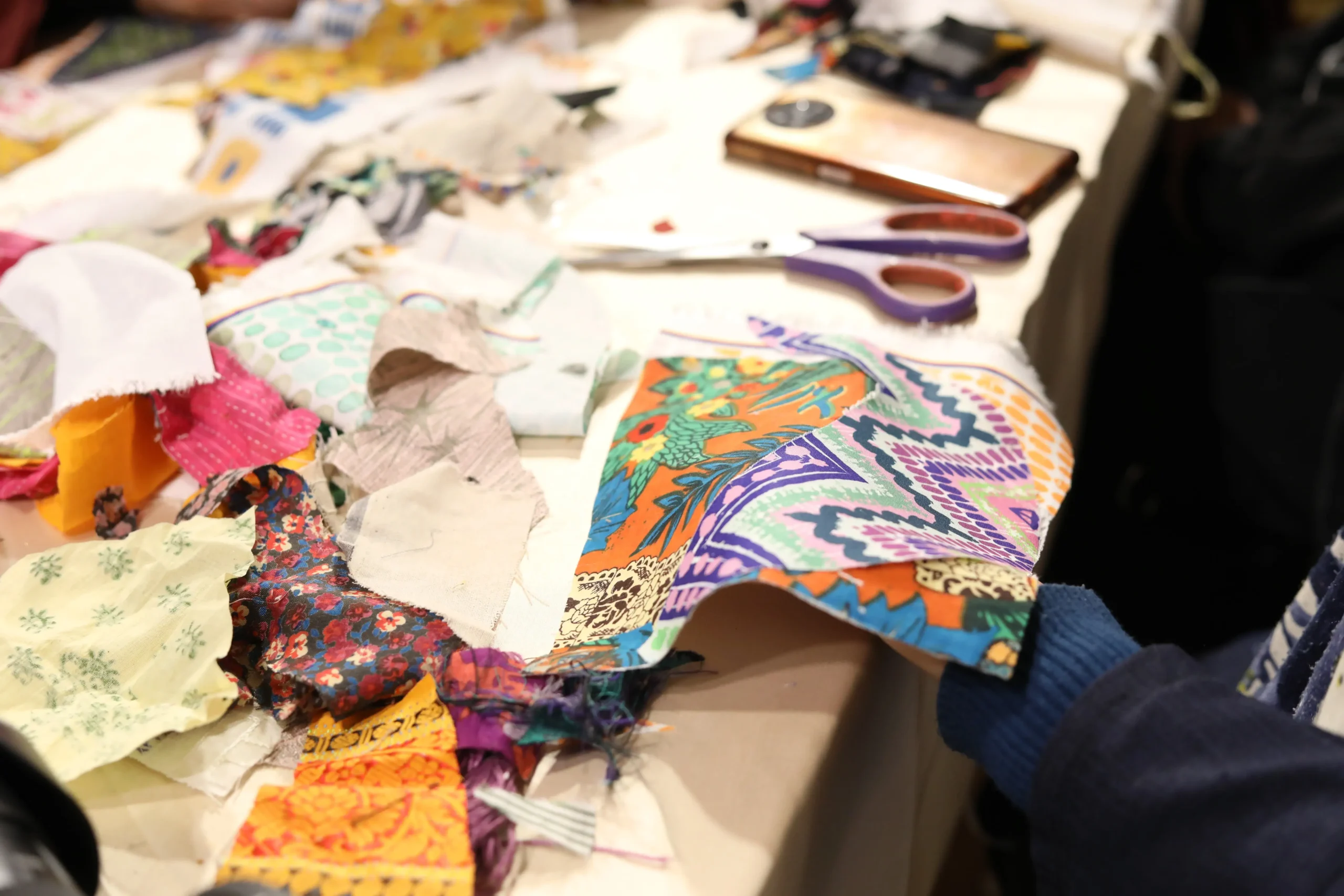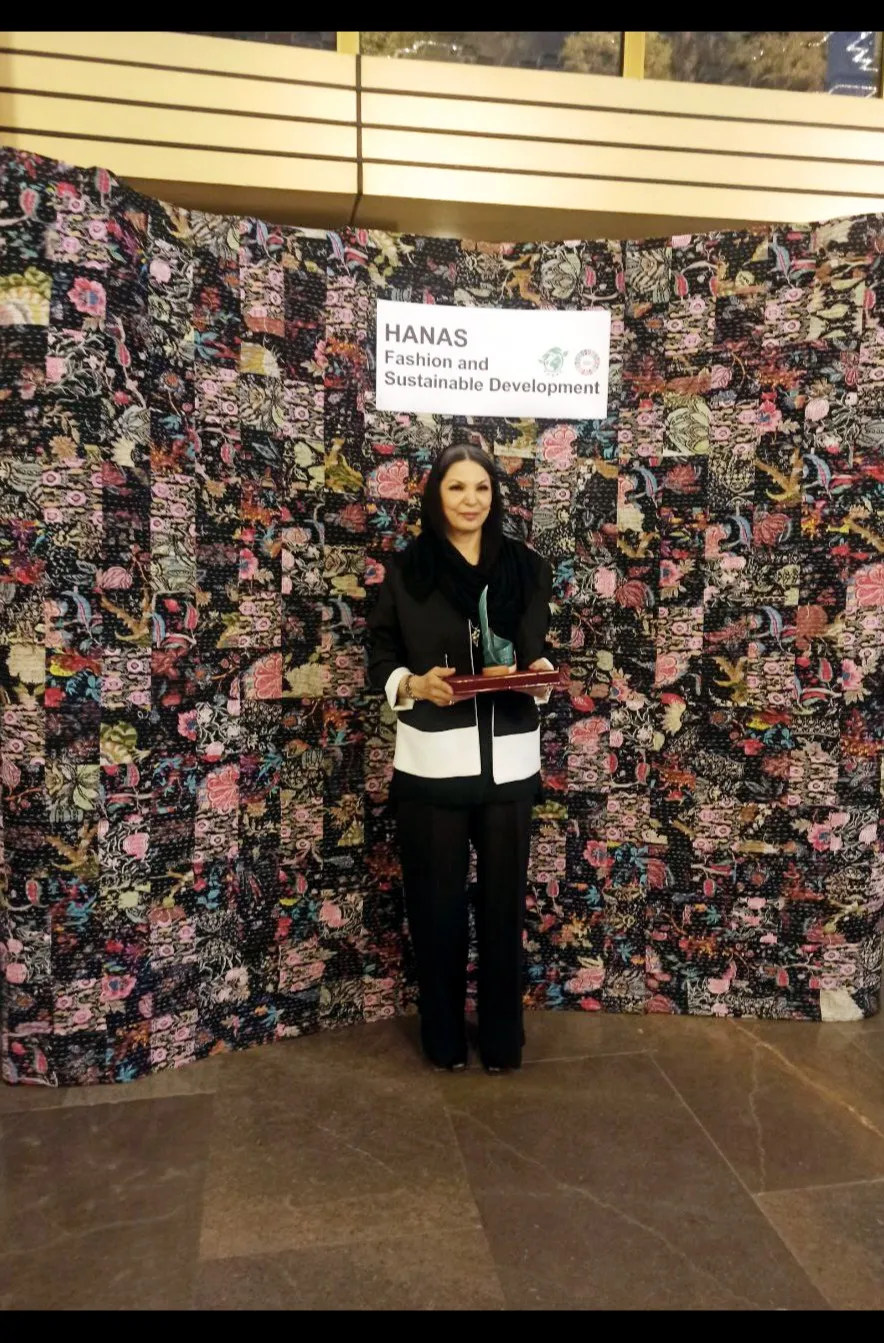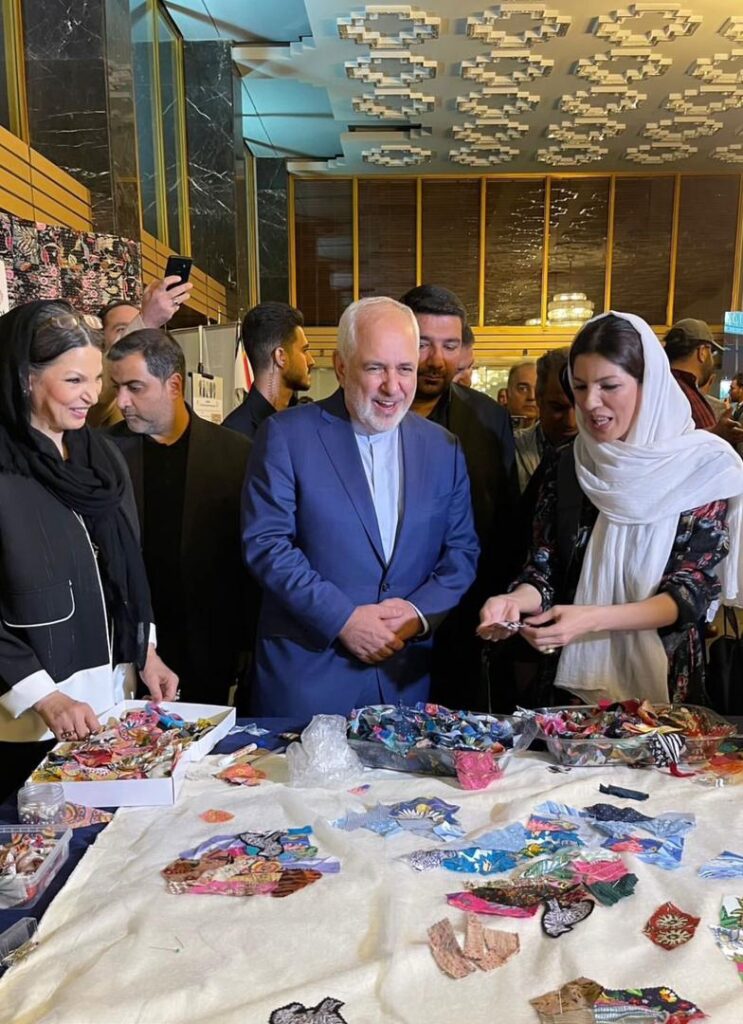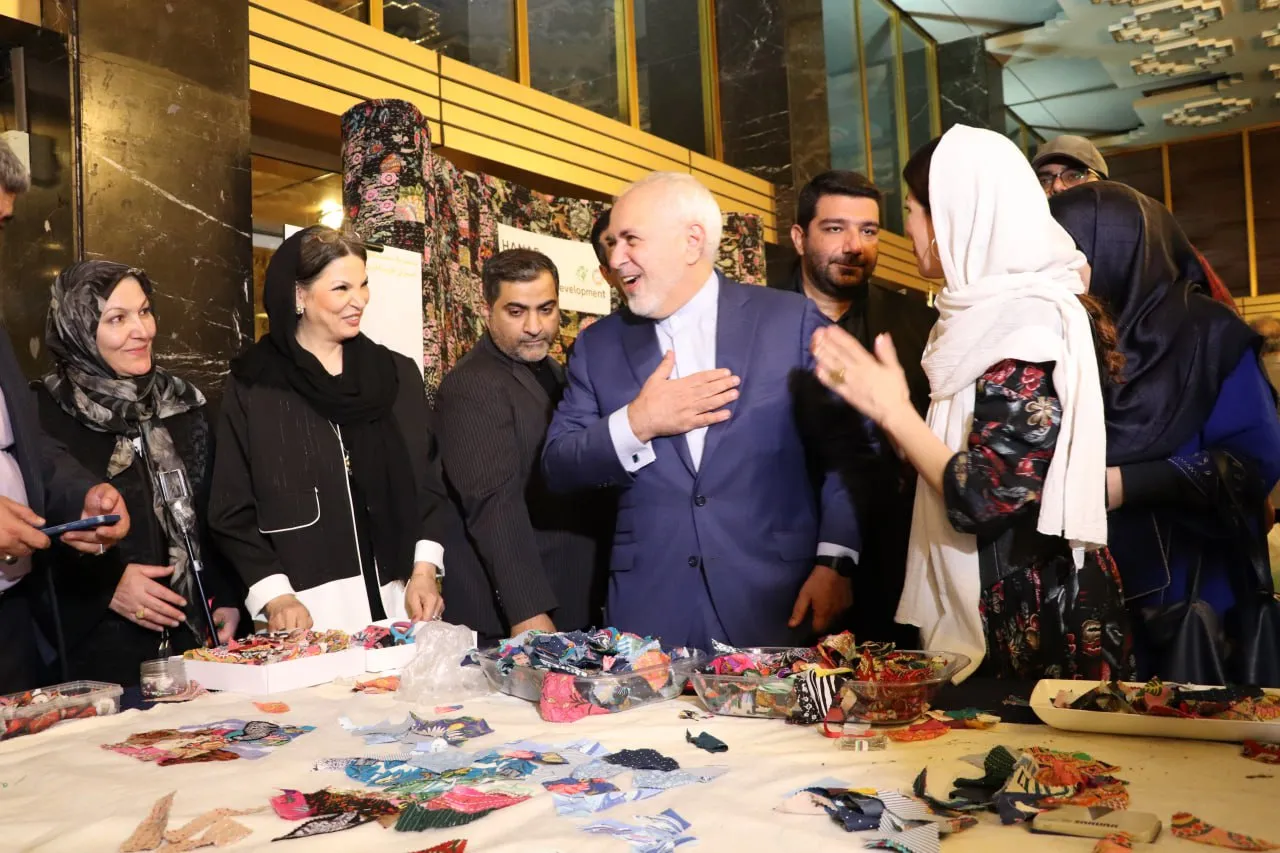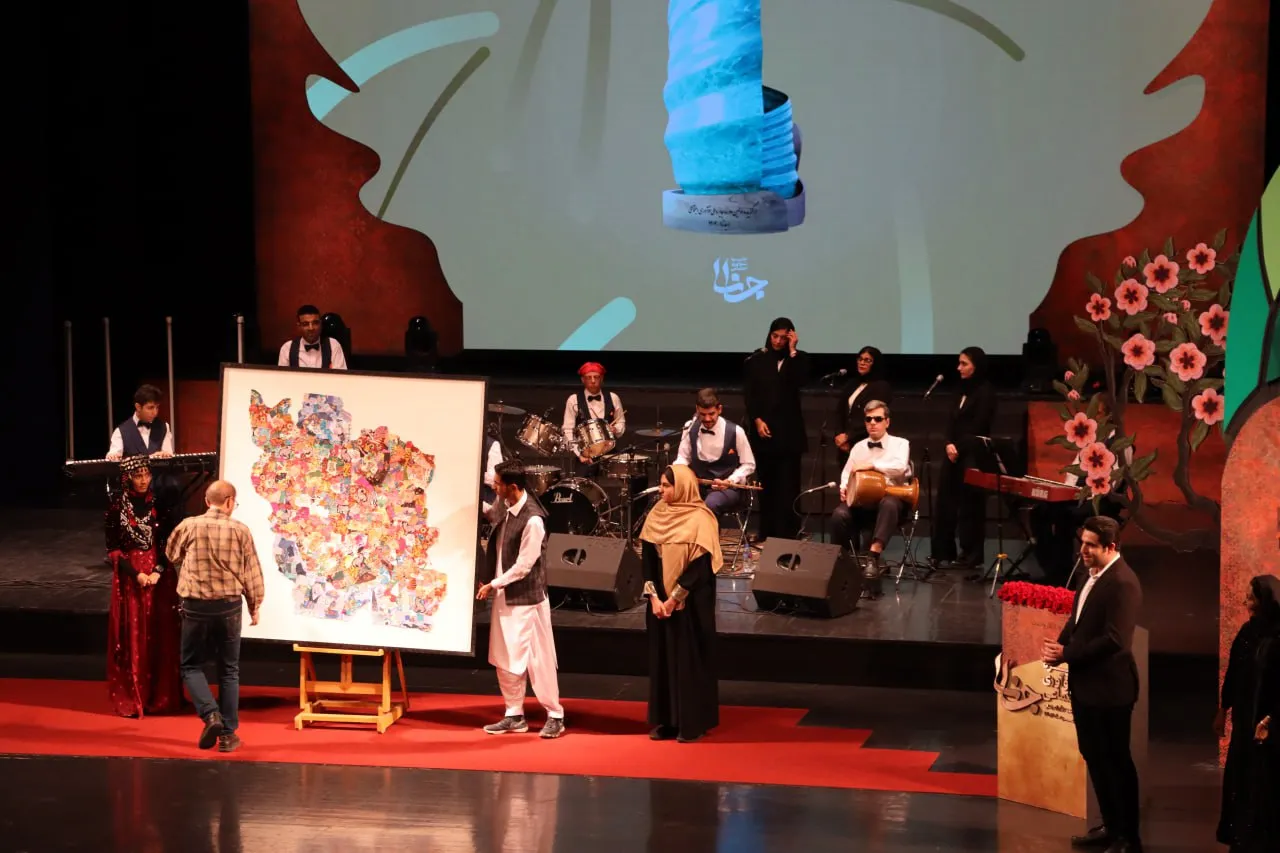Hanas is a fashion initiative in Iran led by designer Chia Jabri. It aims to inspire designers and manufacturers to address environmental concerns linked to consumerism. Jabri’s work emphasizes sustainable fashion, prioritizing social justice and minimizing environmental impacts through eco-friendly materials and responsible production processes. The Sipal Fashion Festival featured sustainable fashion for the first time, showcasing the importance of environmentally conscious practices within the industry. Jabri’s efforts reflect a commitment to responsible living and preserving nature for future generations,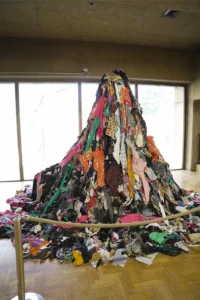 fostering a cultural shift towards ethical fashion in Iran.
fostering a cultural shift towards ethical fashion in Iran.
-
Ms. Chia, how was “Hanas” born?
Hanas is the result of my years of concern about responsible living. Over the past ten years, I have designed and unveiled several sustainable fashion collections. The pandemic provided an opportunity to think more deeply about the relationship between fashion and the environment, rooted in the clothing culture of Iranian tribes, where clothing is not just a consumable item. The coexistence of tribes with nature has led to motifs woven into garments, transforming clothing into a work of art. However, fast fashion brands have become a disaster for nature and targeted the culture and identity of people. We are responsible for our children’s future and must commit to preserving a green earth, clean air, and safe water as a lasting legacy. Art, creativity, and responsible living are essential to protecting the environment.
The history of attention and respect for nature in Iran goes back over 2500 years. Proper and optimal use of natural resources and rituals of gratitude are embedded in the Iranian calendar. One of the characteristics of the clothing culture of Iranian tribes is the use of handicrafts and indigenous arts in the design and production of garments. The optimal use of local raw materials and transformation of them into an artistic piece that is inherited and changes in its application over time. The worldview of Iranian tribes emphasizes coexistence, respect for nature, and non-consumerism. Sustainable fashion is also a return to responsible living. Given the history of Iranians, their inclination towards sustainable fashion will be significant.
-
What is the difference between “Hanas” and other sustainable fashion activities worldwide?
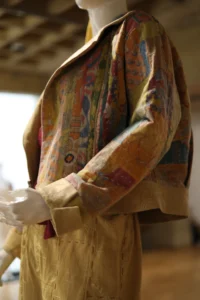 While development and sustainable fashion encompass essential indicators, they are not always applicable in many countries. To advance sustainable development goals intelligently, we must implement plans relative to each country’s economy, culture, infrastructure, and laws. In Iran, different challenges require creative solutions. Our research revealed that waste from small production workshops amounts to at least 15 million kilograms annually, with over 90% burned, contributing significantly to carbon production and air pollution. This represents a huge disaster, as over 10% of greenhouse gases are released annually due to burning fabric waste. The difference of “Hanas” lies in understanding this challenge and providing creative solutions to mitigate it.
While development and sustainable fashion encompass essential indicators, they are not always applicable in many countries. To advance sustainable development goals intelligently, we must implement plans relative to each country’s economy, culture, infrastructure, and laws. In Iran, different challenges require creative solutions. Our research revealed that waste from small production workshops amounts to at least 15 million kilograms annually, with over 90% burned, contributing significantly to carbon production and air pollution. This represents a huge disaster, as over 10% of greenhouse gases are released annually due to burning fabric waste. The difference of “Hanas” lies in understanding this challenge and providing creative solutions to mitigate it.
-
Please provide more details about Hanas’ creative solution.
At Hanas, we thought of a practical solution that aligns with sustainable development goals and the conditions in Iran. Our research took a year. Our goal was to examine small production workshops. After conducting research and obtaining high statistics on fabric waste, my expertise and years of experience in fashion design and cultural entrepreneurship led to the formulation and implementation of the Hanas project.
The creative solution of Hanas addresses the following:
Collecting fabric waste at the source, designing and reproducing several groups of products using fabric waste, creating new and sustainable jobs, fulfilling social responsibility and attracting collective participation, and establishing the first facilitation center for fashion and environment in Iran.
-
What products do you produce, and what are their features?
The Hanas Facilitation Center produces various clothing items, bags, accessories, furniture, paintings, sculptures, and more from fabric waste, with products made from hundreds of separate pieces transformed into unique, cohesive works. Fast fashion offers repetitive clothing, while sustainable fashion surprises individuals with creativity. The Hanas project has saved at least 900,000 liters of water, extending the lifespan of fabrics on the verge of becoming waste. Additionally, Hanas creates education and employment opportunities for women, providing various job categories for university graduates and marginalized women, potentially creating approximately 3,800 jobs over the next five years. One of Hanas’s main focuses is responsible production and consumption, encouraging customers to gift or return products for discounts or transformation into new items.
-
Do you have any specific achievements regarding the uniqueness of
 the Hanas project and sustainable development discussions?
the Hanas project and sustainable development discussions?
Yes, Hanas, as the first project focused on fashion and the environment, held its first exhibition on this topic at the Niavaran Cultural Center in Tehran in January 2024. Additionally, it received special recognition at the twelfth International Fajr Fashion Festival. Furthermore, it was nominated by the World Intellectual Property Organization with the slogan “Intellectual Property and Sustainable Development” for 2024, and four of the sustainable development goals were approved by the Intellectual Property Organization for the Hanas project and recognized by the Iranology Foundation.
-
What activity are you currently engaged in?
At the Fashion and Environment Facilitation Center, Hanas, we produce green products, provide skill training, and create job opportunities through educational and creative workshops. These workshops inform participants about fashion and the environment, presenting solutions to extend the lifespan of clothing and textiles, primarily targeting children, women, and influential individuals. Over the past six months, we have conducted more than 1500 hours of informational seminars. One of Hanas’s essential goals is to attract collective participation to address the challenges of fashion and the environment, as citizen awareness and involvement significantly impact solving these challenges.
-
What purpose was the Hanas exhibition held, and what sections were included?
The Hanas project resulted from three years of research, design, and production, creating over 150 garments, accessories, and bags. People’s perception of fabric waste production was limited, but Hanas presented an artistic and surprising arrangement. The visually appealing arrangement of hundreds of fabric pieces and Hanas’s statement about our collective responsibility towards the environment received significant attention, with over two thousand visitors. A creative workshop for producing artistic panels was well received, awakening essential concepts regarding the visitors’ need for a different attitude and social activism, making them aware of consumerism’s destructive impacts.
-
Do you think sustainable fashion will replace fast fashion?
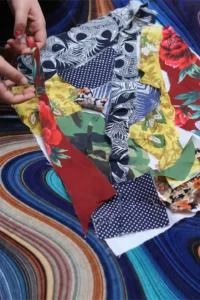 Considering the increase in the Earth’s population to 10 billion by 2050 and their basic needs, of which clothing is a significant part, it is undoubtedly impossible to prevent fast fashion production. At the same time, fast fashion must have a fair and responsible approach towards human resources and the environment. A sustainable lifestyle should replace fast fashion. Sustainable living means understanding how our lifestyle choices impact the world around us, and we all need to find ways to live better both individually, socially, and organizationally.
Considering the increase in the Earth’s population to 10 billion by 2050 and their basic needs, of which clothing is a significant part, it is undoubtedly impossible to prevent fast fashion production. At the same time, fast fashion must have a fair and responsible approach towards human resources and the environment. A sustainable lifestyle should replace fast fashion. Sustainable living means understanding how our lifestyle choices impact the world around us, and we all need to find ways to live better both individually, socially, and organizationally.
-
Who is accompanying you in this project?
I designed and executed the main idea of the Hanas project, with my good friend and companion participating in research, development, and execution. She is the only one who deeply cares about my ideas and encourages me to shine with them. Khatoun, my daughter and capable manager shares my values and is committed to living consciously and developing cultural and sustainable businesses. Our executive team also includes supportive colleagues and friends.
-
How can creative and young individuals interested in sustainable fashion connect with you?
Considering that Hanas is the first facilitation center for fashion and environment in Iran, it helps grow and develop new and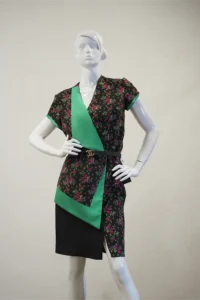 creative ideas like all facilitation centers. This center provides a space where creative individuals can present their ideas and utilize the experience of the center’s mentors to grow and develop their concepts. At Hanas, there are opportunities for internships and skill development, allowing enthusiasts to become familiar with this field and choose it as a career.
creative ideas like all facilitation centers. This center provides a space where creative individuals can present their ideas and utilize the experience of the center’s mentors to grow and develop their concepts. At Hanas, there are opportunities for internships and skill development, allowing enthusiasts to become familiar with this field and choose it as a career.
Today, our world needs more aware, responsible, and kind individuals to understand its contemporary needs. These individuals must control their selfishness, see themselves as part of the world, and take steps to protect the Earth and other living beings. In this context, art can profoundly impact societies’ vision and behavior, serving as a window for attracting collective participation to create a prosperous green land. With our ability, expertise, and love, we have made every effort to live consciously and responsibly and encourage others in this direction.
On Saturday, October 6th, the closing ceremony of the Jana Prize, an award for social innovation, was held. Ten winners out of 810 participants were introduced and honored during the ceremony. The event, attended by some government members, scientific guests, thinkers, and social activists, featured prominent figures such as Dr. Mohammad Javad Zarif, the Strategic Deputy to the President. Among one of the winners was Hanas, which received accolades for its commitment to environmental responsibility and social justice. The recognition at the Jana Prize underscores Hanas’s vital role in fostering a cultural shift toward ethical fashion in Iran, making it a beacon of hope for feature generations in the pursuit of sustainable development.
Jana is an event where innovative projects are examined. Projects that address social issues and achieve sustainable outcomes through social participation. In 2024, over 860 projects in various sectors of social entrepreneurship, social responsibility, and social innovation participated in Jana. The criteria for selecting the top projects were based on sustainable development goals, creating sustainable jobs, and establishing sustainable cities. The event, attended by some government members, scientific guests, thinkers, and social activists, featured prominent figures such as Dr. Mohammad Javad Zarif, the Strategic Deputy to the President.
“Henas” is the only fashion and sustainable development project in Iran selected as one of the top 10 projects in 2024. The main focuses of Henas are environmental preservation, the creation of sustainable employment, education for underprivileged women in the community, and education for children and adolescents regarding environmental conservation, which received significant attention from the judges. At the closing ceremony, a concept was presented to promote social partnerships to address community challenges. With the participation of 800 guests, a map of Iran was created and showcased at the final stage of the Jana event. The recognition at the Jana Prize underscores Hanas’s vital role in fostering a cultural shift toward ethical fashion in Iran, making it a beacon of hope for future generations in pursuing sustainable development.





